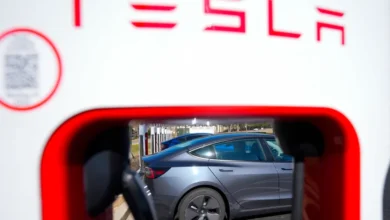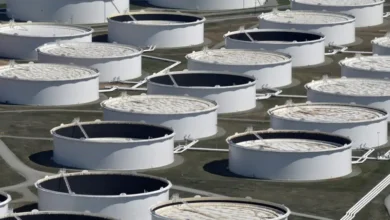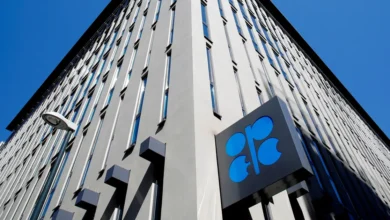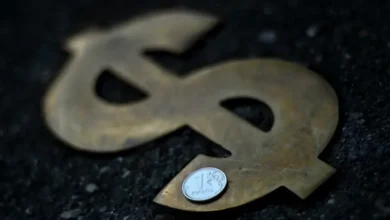Federal Reserve signals interest rate cuts next year

The US central bank has signalled it could start cutting interest rates next year if inflation continues to fall.
Forecasts released by the Federal Reserve showed a majority of policymakers expect to cut its key interest rate in 2024.
But on Wednesday the central bank decided to keep rates unchanged again at 5.25%-5.5%, a 22-year high.
Markets surged on signs borrowing costs could be reduced next year, with the Dow Jones closing at a new record high.
The three major indexes in the US ended the day up 1.4%.
The bank has raised rates sharply since March 2022, in a bid to cool the economy and slow price rises, which last year soared at the fastest rate in decades.
“It is far too early to declare victory,” said bank chairman Jerome Powell. “There is a lot of uncertainty and we’ve seen the economy move in surprising directions, so we’re just going to need to see further progress.”
But the Fed’s confidence is growing.
Projections released after the meeting showed that none of the rate-setting committee members believed they would have to raise rates further in 2024.
Instead, a majority of policymakers now expect to cut rates below 5% next year – a big shift from a few months ago.
“This gives real credence to the view that [the Fed] thinks inflation is under control and believes that policy is producing the right outcome for the economy,” said Neil Birrell, chief investment officer at Premier Miton Investors, a London-based asset management firm.
The Fed announcement came ahead of a number of central bank meetings in Europe. The Bank of England, which meets on Thursday, is also expected to hold interest rates again.
In a press conference after the announcement, Mr Powell said he welcomed signs that inflation, the rate at which prices rise, had slowed.
But Mr Powell said the bank remained alert to the risks of rising prices, noting that inflation remained above the 2% rate that the bank wants to see.
While Fed policymakers do not expect any further hikes, Mr Powell said they did not want to take the option off the table.
“If the economy does not evolve as projected, the path of policy will adjust,” he said.
Inflation in the US has already come down significantly since its 9.1% peak in June 2022.
Prices were up 3.1% last month, compared with a year earlier, according to Labor Department figures released this week.
Fed members expect inflation to fall further next year, but do not expect it to return to the 2% target rate until 2026.
By making borrowing more expensive, higher interest rates encourage saving and reduce borrowing for home purchases and business investments, cooling the economy and easing the pressures pushing up prices.
Officials expect the US economy to grow by 1.4% next year, which is significantly slower than this year’s pace.
The Fed also expects an uptick in the unemployment rate, which currently stands at 3.7%.










